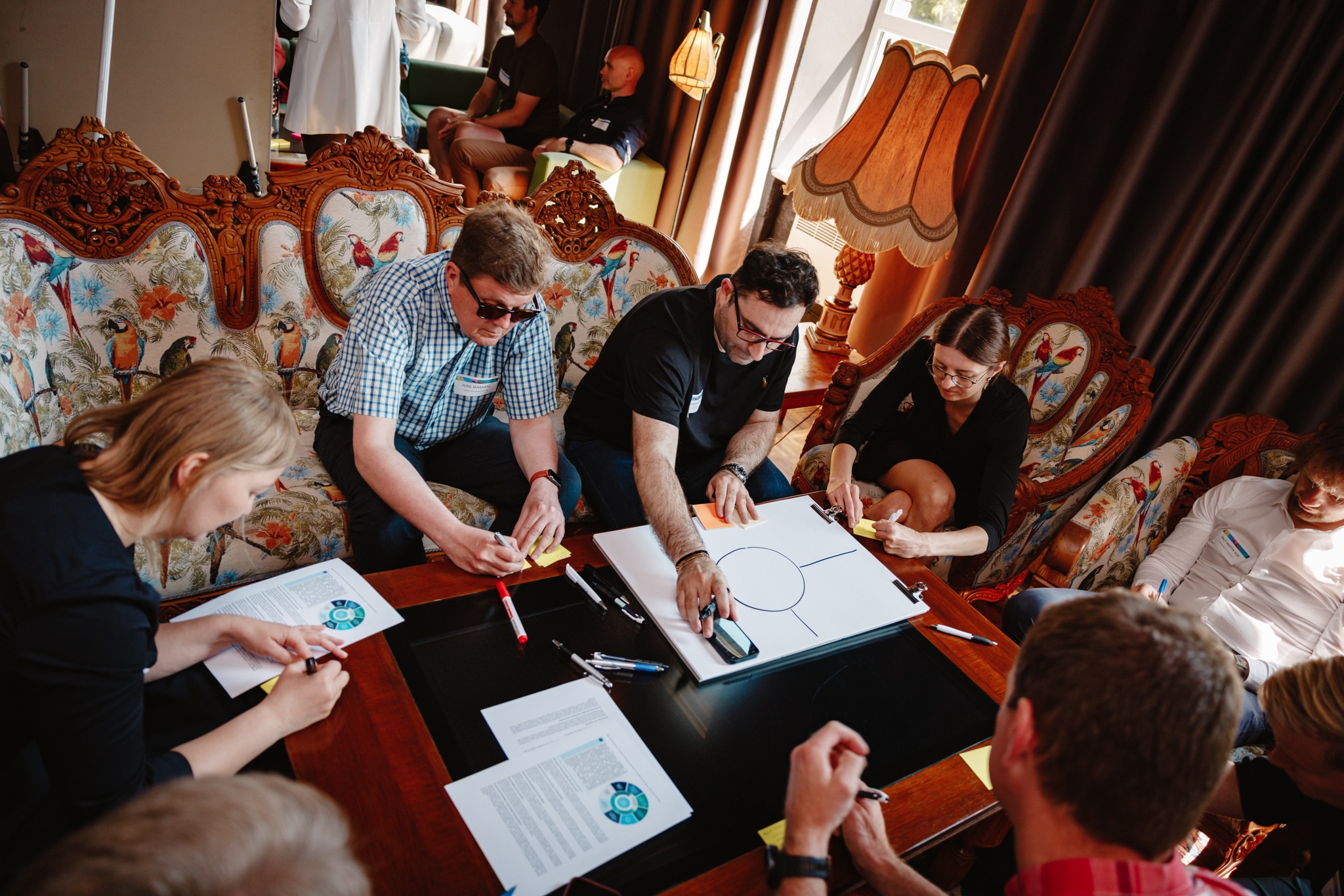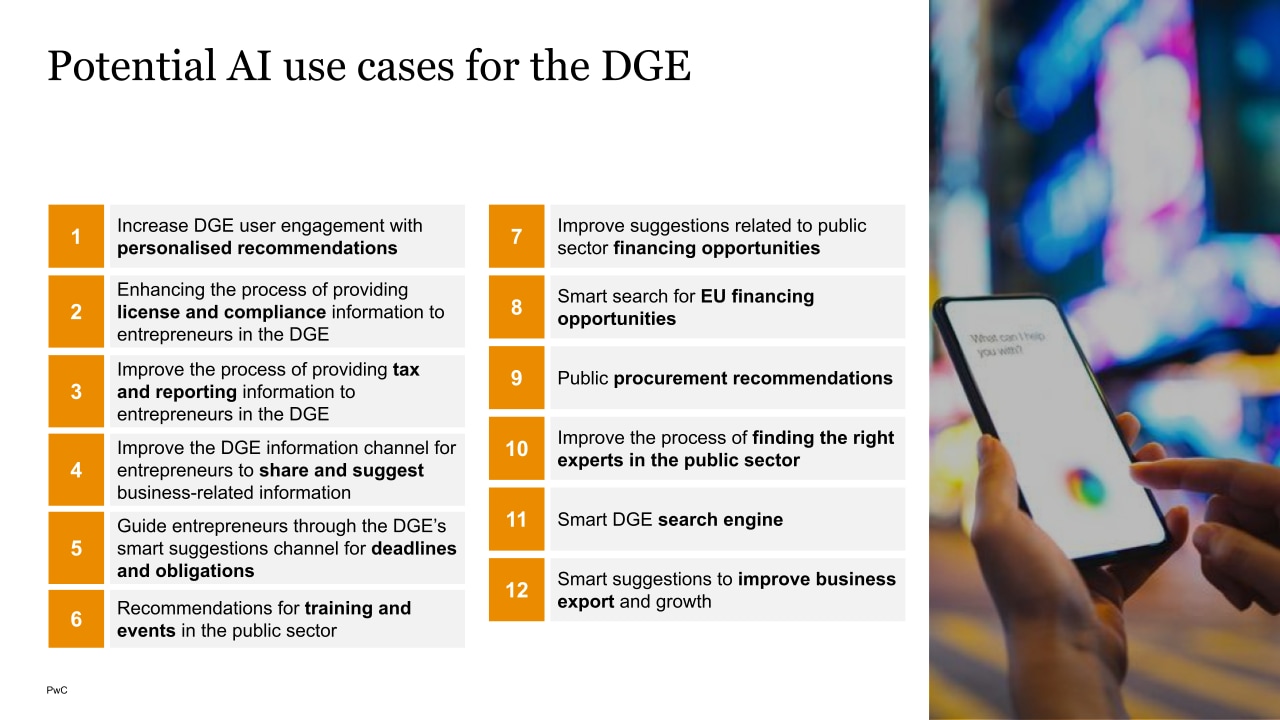Digital gateway for enterprises
Estonia, recognised globally as one of the most digitally advanced nations and a pioneer in digital public services within the EU, is steadfastly enhancing its provision of digital services to entrepreneurs. Estonia is currently developing a digital gateway for enterprises (DGE) — a digital contact point solution for entrepreneurs to interact with the state, find business-related public information and consume public e-services. Moreover, Estonia is actively exploring opportunities to harness the potential of artificial intelligence (AI) to elevate the standards of service provision to new heights.
Why is Estonia developing a digital gateway for enterprises?
As of now there are approximately 156 public agencies in Estonia along with local municipalities and other organisations that provide public services and information to enterprises. However, since these services and information are dispersed across different platforms operated by different agencies, it becomes a daunting task for entrepreneurs to locate relevant information and services promptly. According to a survey conducted by Kantar Emor in 2020, nearly one-third of Estonian entrepreneurs find it challenging when searching information about the public e-services, and nearly half of them encounter difficulties in finding information about relevant support measures.
In addition, there is no unified approach and/or structure for service provision and communication with entrepreneurs. Although there are several successful instances of well-developed e-services and service channels that entrepreneurs tend to be satisfied with, there are also some services that fall short of meeting their high expectations. The discrepancy in quality between these excellent and substandard services creates dissatisfaction among entrepreneurs.

Foto: Rene Lutterus
“Operating in the Estonian digital space makes you feel like you’re on a fast track - everything moves quickly and usually without a hitch, but then you come across a function that doesn't work and it irritates you because you feel like you’ve hit a wall at high speed, and it makes you feel like it’s the end of the world, even though it might not be much at all."
Both entrepreneurs and public sector institutions are advocating for one digital gateway so that all services could be accessed through a single environment. Based on Kantar Emor survey, 76% of the entrepreneurs said that they would prefer a single portal to interact with the state. In addition, public agencies are shifting towards a more user-centric approach, transitioning from designing services based on their own needs and convenience to focusing on the end user.
What are the main challenges entrepreneurs in Estonia are currently facing?
The one thing that most entrepreneurs in Estonia can agree on is that registering a company in Estonia is relatively easy and straightforward. However, what follows next is often a challenge, especially for the micro-entities that have fewer resources to operate.
The primary obstacles that entrepreneurs face are mostly related to meeting various requirements set by the state. While the digital gateway is viewed as a viable solution for consolidating information and services in one place, entrepreneurs often require additional assistance to ensure that they have met all the obligations. The primary purpose of the portal should therefore be to aid enterprises in fulfilling their obligations and guiding them through the next steps after successfully establishing their company.

Foto: Rene Lutterus
In addition to the aforementioned challenges, entrepreneurs have voiced several expectations for the gateway based on their existing struggles. While this list is not exhaustive, it highlights some key concerns:
As entrepreneurs sometimes miss deadlines because of not being aware of them, the gateway could inform the users with most relevant deadlines regarding important tasks.
The entrepreneurs are aware of many different national funding opportunities, but have often trouble finding them, especially if a suitable funding opportunity is opened outside of their usual field of operations. The gateway could potentially provide the information on open calls for national funding opportunities.
Entrepreneurs often have questions that the state could answer, but the wording is not using the classic terminology for the state to fully understand the question at hand. The gateway could provide the opportunity to search relevant information without knowing the exact key words.
Whilst entrepreneurs have highlighted many specific challenges and needs, the general expectation to the state is to lessen the current administrative burden by more seamless and convenient provision of services.
“The things that the state wants the entrepreneur to do should be no more than 3 clicks away. Things that the state does not want the entrepreneur to do should be more than 3 clicks away.”
How does artificial intelligence come in play?
As stated in the Estonian Kratt Strategy 2022-2023 the use of artificial intelligence has become an essential and unavoidable part of advancing the digital state. Since 2018, there has been significant growth in the number of AI projects being carried out by Estonian public agencies. AI is used in the Estonian public sector to predict employment pathways, transcribe emergency calls, answer citizens’ questions via chatbots, detect changes to agricultural grasslands, etc. With respect to the digital gateway for enterprises, AI could be utilised to provide services in a more user-centric and proactive manner.
Like Estonia, Singapore has created its own portal for entrepreneurs called GoBusiness. In order to assist businesses in obtaining the necessary licenses to operate, Singapore has leveraged AI to offer guidance. In addition, they have developed 24/7 e-Advisors that profile users based on several previously asked questions and direct users to relevant assistance schemes, including grants, loans, tax incentives programs.
After analysing the requirements of Estonian entrepreneurs, 12 potential AI use cases for the DGE have been identified. The majority of identified use cases focus on providing personalised recommendations or proactive notifications based on the user’s profile, recent activities and searches in the gateway and information regarding different services.

The implementation of the identified use cases within the gateway would enable entrepreneurs to effortlessly find useful information and services, obtain an overview of their deadlines and obligations, and stay updated on suitable opportunities that may arise. This not only saves time but also aids in informed decision making.
What are the next steps?
Estonia is actively progressing in the development of the digital gateway for enterprises, with a comprehensive roadmap of 10 major IT development projects scheduled until 2025. The Ministry of Economic Affairs and Communications, the agency responsible for the development of the gateway, warmly welcomes entrepreneurs to participate in various development projects to help map user needs and test new solutions.
If you are interested in learning more about the current state of AI-readiness and the process of implementing AI in the Estonian digital gateway for enterprises, you can find additional information using the following links:
The reports and video presentation are produced within the project “Supporting productivity and competitiveness of Estonian SMEs through Real-Time Economy and single contact point digital solutions”. The project was funded by the European Union via the Technical Support Instrument, managed by the European Commission Directorate-General for Structural Reform Support.



